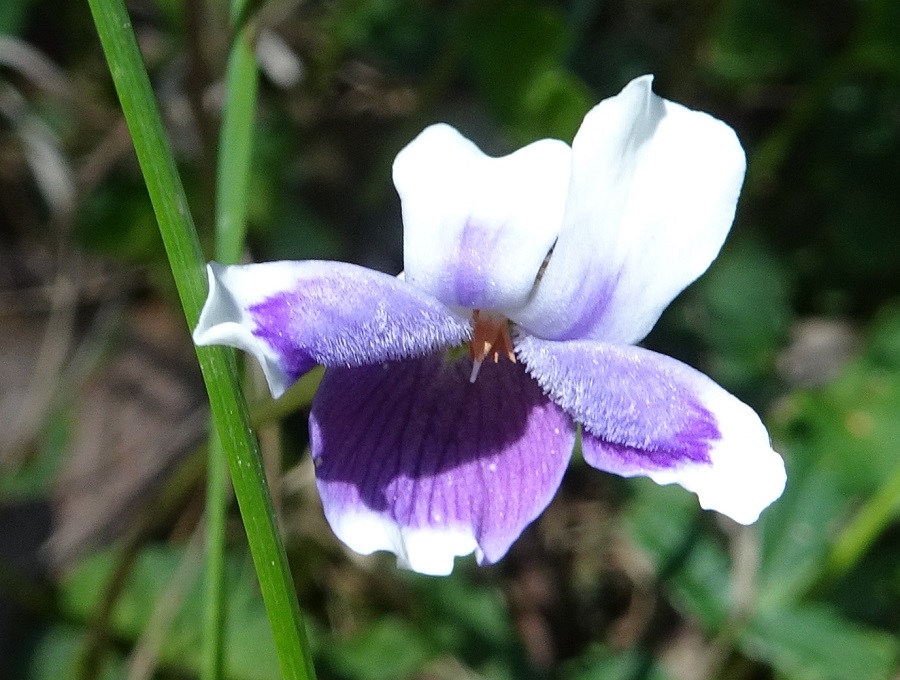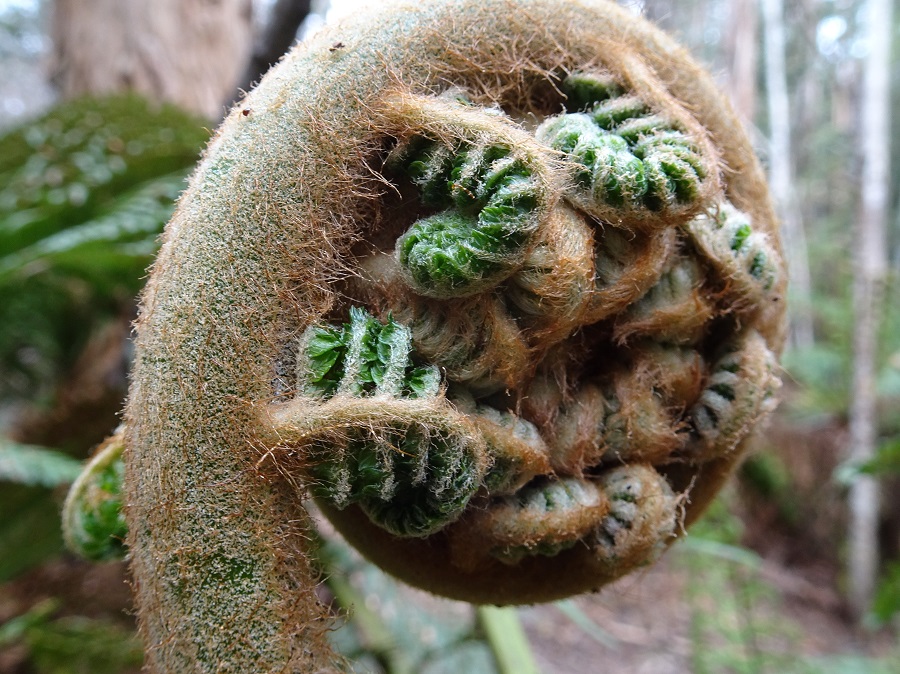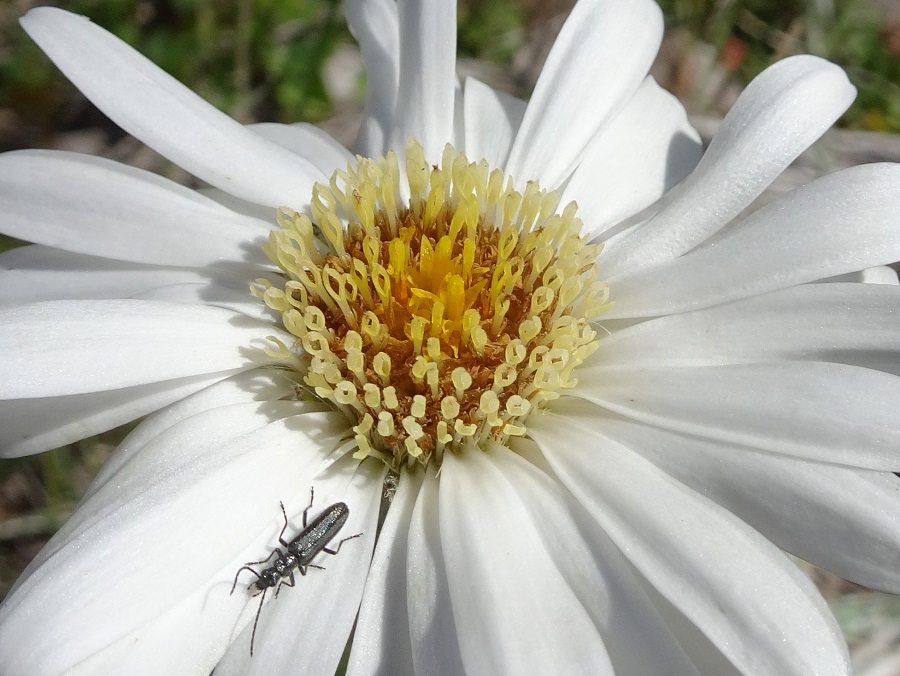Wildflowers, a look close up
Even though we can't take you on any tours to enjoy nature right now, we can still share the beauty of wildlfowers from East Gippsland and Victoria's alpine regions. Native wildflowers and indeed flowers of any sort provide us with a great deal of joy. They come in a range of colours and forms and we love the massed effect of many species complimenting each other in our garden or in the wild.

Above: Daisy bush, Olearia sp near Mt Hotham in the Alpine National Park
But flowers provide another level of beauty, that is only seen close up. Sometimes the “inner beauty” rivals the overall effect of the flower in its delicate detail. Lets take a look close up at some of our wonderful native wildflowers.


Left: Alpine Podolobium, Podelobium alpestre Right: Native violet, Viola hederacea
There are some simple tools you can use to help you enjoy and appreciate this new angle on your flowers. Best of all is a Hand lens (10x is a very good magnification), however an ordinary hand held magnifying glass will work well too and is easy to use. Office suppliers or even your local Post office will have something to magnify print that will also work fine. Practice a bit to see how close you hold it to the flower and how close your eyes need to be to the magnifier. This is also a new use for your binoculars. However, you need to turn them around the other way so you look into the end of the lens, not into the eye piece. At first you will seem to be looking down a long tunnel with the flower far far away, but get closer – really close! You will almost touch the flower but suddenly you’ve got a great magnified view. Whatever you use, the more you practice the better you will get at finding the best way to look up close.


Above Left: A variety of different magnifiers to use Above Right: Snowgum flowers Eucalyptus pauciflora, in detail
Flowers take on many forms and as well as the intricate detail of the parts of the flower, there are beautiful colours you don’t see at first. Both the Mint Bush flowers below are brilliant white on the bushes, but take a look inside and another world of colour emerges.


Above: Alpine Mint Bush, Prostanthera cuneata at top and Christmas Bush, Prostanthera lasianthos from Errinundra below
All is not what it first seems with many flowers. Take a look at the first picture below, you can see the silvery grey matt herb that the lady is looking at (Silver Ewartia) – it seems nothing special, just a patch of grey on the ground. But look at the second photo to see what she is looking at – a mass of tiny colourful flowers!


Above Left:Silver Ewartia as a matt herb, Ewartia nubigena Right: Flower detail of Silver Ewartia, Ewartia nubigena
This silver Ewartia belongs to the daisy family Asteraceae, one of the largest and most varied flower families in the world, however at first glance it does not look like a daisy. With such a large family there is lots of variety, not just in flower shape but also in the form of the plants. There are annuals, perennials, shrubs and small tree all in the Asteraceae family. In your own garden you might find chrysanthemums, marigolds or sunflowers or weeds like thistles that belong to this family.

Above: A flower that is easily recognised as a daisy, Brachyscome sp from the Alpine National Park
These Purple Daisies above are more typical. Flower of the Daisy family have composite heads made up of with many many small flowers or florets packed tightly together, surrounded by rays to make what we see as a flower. In the photo above the yellow centre is actually the tight cluster of tiny yellow flowers.
In the Australian Alps, the bright yellow or orange Billy Buttons can make quite a show when massed across the plains in summer. But take a look up close and you can see all the tiny yellow flowers that make up each “flower” we see. Daisies need insect pollinators and there is a lovely native bee gathering pollen on these Billy Buttons.


Above Left: Billy Buttons Craspedia species Above Right: Billy Button Craspedia sp. up close, with a native bee covered in pollen
Looking up close is not just restricted to flowers, here are some non-flowering plants that are also worthy of close inspection with a magnifier. Can you see a couple of tiny insects on the top left of the Treefern frond? How luxuriously soft does that moss look?


Above Left: Soft Treefern, Dicksonia antarctica, Errinundra Above Right: Moss, Errinundra
Below on the left is a small plant that looks like a moss, until you look up close and find it has lots of stalks with tiny twin flowers on top. This one is beginning to go to seed so the flowers are turning from green to pale fawn colour. We call this compact low form of growth a cushion plant and the “twin-flower” part of its name is easy to remember, as it the “biflorus” (bi=2 florus=flower) part of the scientific name. Learning names is so much easier when you can understand the reasoning behind them.


Above:Twin-flower Knawel, a cushion plant and on right, Twin-flower Knawel, Scleranthus biflorus showing the twin flowers
These next two flowers are a couple of my favourites. On the left the Snow Daisy from the Alpine National Park has an amazing structure to the flowers in the centre, and as a bonus there is a lovely little beetle. On the right is a Common Bird Orchid. I don’t think there anything “common” about this beauty – especially when you take a look inside. The name “Bird Orchid” is due to it looking very much like a baby bird with its beak open calling for food. However these Orchids are very clever about attracting the correct pollinators (usually wasps) using sexual deception. Parts of the flower mimic the shape of a female wasp and they can emit a odorous pheromone that even smells like the female wasp. The idea is to trick the male into coming close enough to get a dab of pollen as he attempts to mate, then to take this on to the next flower.


Above: Snow Daisy, Celmisia sp. from the alps plus an insect Right:Common Bird Orchid, Chiloglottis valida from Mallacoota
Finally we found an Alpine Bottlebrush which shows the buds just opening to reveal the prolific stamens – no worry about attracting pollinators here, there will be an abundance to nectar to bring both insects and small birds. The flowers on the right look like a Pimelia species and they have such an interesting shape, they were worthy of including too. Can you see the small insects hiding on these?


Above left: Alpine Bottlebrush, Callistemon sieberi Above Right: A Pimelia sp. from the alps
So what’s stopping you? Hunt around and find a magnifier, then head out into the garden and see what beauty is hiding within your flowers, ferns or grasses. Have a go at taking photos close-up too, even mobile phones will do a reasonable job and you can zoom in later on the screen to see the details. I’m sure you will find some small garden critters too. They will be the subject of another Blog story later.
Jenny Lawrence, April 26, 2020
Go to - Next story Tiny Wildlife in East Gippsland during Autumn
Go to - Previous story Tale of two nests
Go to - Blog index page
If you would like to leave a comment about this story you can do so on the post about it on our Facebook page and like the page to be notified when the next Blog story is published.